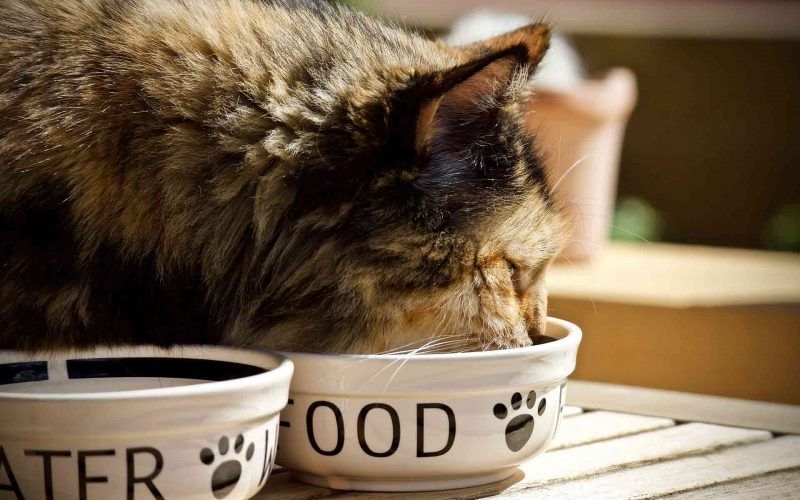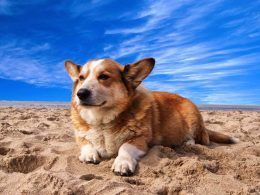Expert Diet and Nutrition Tips for Cat Owners

Table of Contents
If you’re a pet parent, then you know that proper diet and nutrition is very important for your pets. Especially your cat may become overweight if it is overfed. You need to feed your cats with the right food in the right quantity at the right times. Know the expert diet and nutrition tips for your beloved cat so it remains happy and healthy. ~ Ed.

Few things in life are better than pets, and cats are one of the most popular domesticated animals on the planet. It is estimated that there are over 92 million cats living in the United States alone, making them slightly more popular than dogs.
Cats are wonderful companions and need to be treated with love and care, proper nutrition included. If you are wondering whether you are feeding your cat the right food, look no further.
For this article, I have spoken to experts in the field of feline nutrition to bring you all the best tips to ensure your kitten is being fed properly.
Wet vs. Dry Food
Whether you choose wet or dry food, the first thing to be sure of is that you are feeding your feline friend a balanced diet. If you visit Petsumer you will see all the respected, trusted, and well thought of brands of cat food. It is important to use a respected brand as they have tested their foods to contain all the essential vitamins, minerals, fats, protein, and carbs to perfectly match the needs of a cat.
Dry Food
Some prefer to feed their kitties dry food as it is easier, smells less, and can be left out for long periods so your cat can graze all day long. There is nothing wrong with this choice, according to experts. Dry food is perfectly healthy for your cat, as long as they are healthy and have strong teeth.
It is important to consider that when a cat gets older it may struggle to chew on hard food and prefer something softer. Also, when a cat is fed a diet of predominantly dry food, they may require more water so make sure that bowl is topped up!
Wet Food
Wet food usually comes in a can or pouch. This can be beneficial as it means portion sizes are easier to control. You can read the packet and see that an adult cat should have, for example, one pouch of food per day. This is appealing to some people so they can keep in control of their kitten’s eating habits.
However, wet food needs to be fed at regular times. You shouldn’t leave wet food out all day for a cat to graze on as it is usually meat and jelly based, meaning it could attract unwanted flies and critters.
So really, the choice is yours. Some people prefer to blend the two by feeding a tasty wet meal to their cat in the morning and then measuring out a portion of dry food to last the afternoon. Whatever you choose, your cat will definitely become very used to and happy with as long as it is tasty and healthy. If your cat is turning its nose up at wet and dry food, you should speak to your veterinarian.
Related Posts
How Often To Feed Cats
Overfeeding is an epidemic in cats, with many domestic house cats becoming incredibly overweight. This can obviously lead to serious health problems as your cat ages, and hinder its natural athletic abilities. The question isn’t really about how often to feed cats, but more about how much. Cats, like us, burn energy when they are active, but they burn a lot less energy than humans do.
Every good packet of cat food will display caloric content and suggested portion sizing. Stick to these rules, and divide it up however you like throughout the day. With dry food, you could simply measure in the morning and leave it all day. With wet food or a mixture, we suggest a bowl in the morning and at night.
What About Water?
Fresh, clean water should always be available to your pet. You will notice a huge difference in the amount they drink depending on what they are fed. Dry food only contains around 8% water, whereas wet food contains more like 80%. To maintain body temperature and a healthy metabolic system, a cat needs to roughly match its water intake to its caloric intake.
For example, 100kcal of food roughly needs a balance of 100ml of water. Your cat will do this itself, you do not need to measure, as long as you ensure the freshwater is always topped up. Signs of dehydration include lethargy, dry mouth and nose, loss of appetite, and panting. If you spot any of these symptoms, try and tempt your cat with some water as soon as possible.
Foods To Avoid
Like any animal, there are certain foods that can be poisonous to cats. Believe it or not, one of the classic cat favorites – tuna – can be bad for your pet. Tuna in small quantities is no problem, but a sustained diet of tuna can lead to malnutrition and mercury poisoning. Milk and cheese, although also popular cat snacks, are actually very bad for cats of all ages.
Most felines are lactose-intolerant, meaning the sugars in dairy products can cause serious gastrointestinal upset. Other dangerous foods for your kitties include chocolate, caffeine, alcohol, raw meat, bones, and onions. Though your cat may try and nibble at some of these items, we recommend training your friend early on that these are not suitable.
Healthy Treats For Your Cat
Everyone loves giving their pets treats every now and then. Seeing your kitten jump for a delicious treat is just too cute to miss! But, like everything, moderation is key. As I have previously mentioned, many domestic pets are overfed. They are not smart enough to choose when to stop, so if you keep laying out the treats, they will keep eating!
If you just love giving your kitties treats, then make sure you slightly reduce their intake of other foods to balance out the treats. Lots of treats from top brands are now delicious enough to drive your cat crazy whilst actually being super healthy.
Wrapping Up
This guide should now have given you every bit of information you could need to ensure your cats are fed well, healthily, and just enough. After all, we all want our pets to live long and happy lives, and this starts with their food.
Go get your pet some top-rated food and treats, and watch their coat, skin, and eyes shine healthier than ever before.
Over to you
Do you have a pet cat? Share your experiences and tips regarding diet and nutrition for them in the comments section.
Disclaimer: Though the views expressed are of the author’s own, this article has been checked for its authenticity of information and resource links provided for a better and deeper understanding of the subject matter. However, you're suggested to make your diligent research and consult subject experts to decide what is best for you. If you spot any factual errors, spelling, or grammatical mistakes in the article, please report at [email protected]. Thanks.















Hi Emily, This article on expert diet and nutrition tips for cat owners is fantastic! I appreciate the valuable insights and advice provided. Feeding our cats the right food in the right quantities is crucial for their health and well-being. The information about wet and dry food options and their pros and cons was particularly helpful. Thank you for sharing these expert tips. It’s reassuring to have such reliable guidance when it comes to nourishing our beloved feline companions.